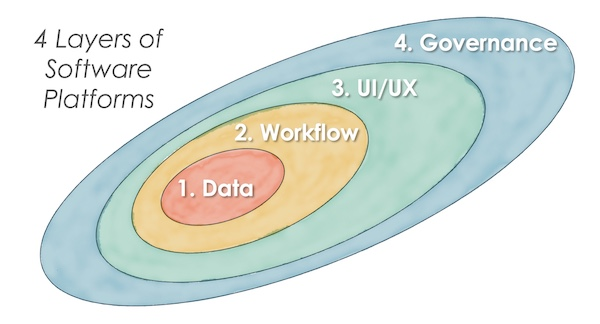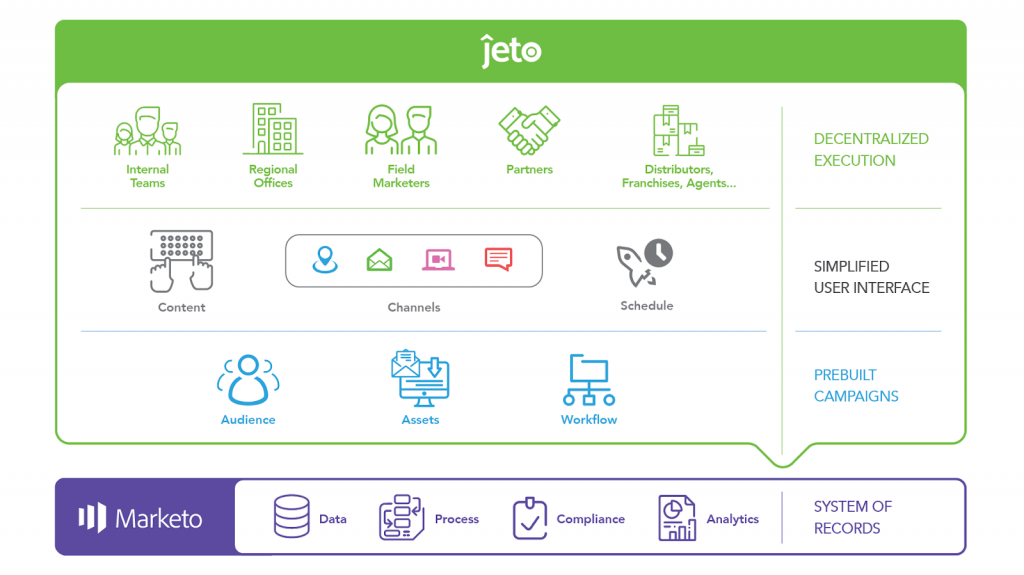The question of the day for many MOPS leader is, should I centralize or decentralize my marketing operations? On one hand, centralization keeps things neat, coordinated, and under control, while on the other, decentralization allows for greater access for marketers. It’s quite the quandary.
We believe that decentralization is no longer an option today—it’s a must to survive in our fast-paced tech world. But before you give your Center of Excellence (CoE) the boot, what we’re suggesting is a centralized/decentralized hybrid approach which empowers marketers without putting your brand in jeopardy.
Have we captured your interest? Let’s take a look at how and why this approach works best.
Why a Hybrid Model Makes Sense
Decentralizing marketing efforts has become easier largely because the technology to set marketing campaigns in motion has become far more user-friendly. It wasn’t too long ago when we relied on IT teams to run marketing campaigns. But today, almost anyone in an organization can quickly learn how to use the tools and put them to work. We’re making progress…but a new challenge emerged as a result.
The problem of maintaining brand consistency. Now, literally anyone has the ability to be a “marketer,” and organizations struggle with maintaining the message behind their brand. In fact, this is one of the reasons behind why 78 percent of organizations cringe when they consider giving nearly any employee access to their Marketo instance, for example.
There’s no question that organizations should both centralize and decentralize in a way that produces the best results. Automation is critical for efficiency, while at the same time, companies must maintain that human element so that they are more engaging and accessible to their consumers.
How? The first place to start is to take a good hard look at your organization’s Center of Excellence.
Supporting Decentralization through the Center of Excellence
The Center of Excellence (CoE) has been the preferred solution for supporting marketing and ensuring everything runs smoothly for a number of years. Unfortunately, many organizations today are finding that their CoE is no longer as effective or efficient as it could be. The three most common reasons?
- The current CoE model has aged out. While both your technology and your people have grown, your CoE likely hasn’t grown with them.
- Marketing automation isn’t new. Marketing automation tools and platforms are table stakes, not new innovations. As such, they’re expected to be part of your organization’s marketing stack and a marketer’s skill set. Leadership often assumes that their teams know Marketo through and through and thus will be able to put out more campaigns and achieve ROI like never before.
- Management expects more from their automation investment. Let’s not kid ourselves, Marketo is not an insignificant investment. Management wants to see the ROI and isn’t going to accept having to wait days to launch a marketing campaign or go through loads of steps to deploy a marketing strategy.
Of course, there are other challenges related to the execution of a marketing campaign, like:
- Training: Being an extremely powerful platform, extensive training is needed for Marketo to ensure that campaigns are properly created and deployed.
- Campaign Errors: Despite having the best intentions and following best practices, mistakes can and do still happen.
- Technical Support: Marketo has become easier to use over the years. However, being such a powerful platform, it does require a higher-than-average level of technical know-how to operate.
- Scalability Issues: The manual steps and limitations in the campaign execution process can lead to scalability problems.
How to Build up Your Center of Excellence
Like we said earlier, don’t scrap your CoE but it is time to update your technology and strategy. As noted by Scott Brinker on ChiefMartec.com, when it comes to aligning your core software platform (i.e. Marketo) with the apps and plugins that work hand-in-hand with it, four layers should be in place.

What does all this mean? When we took this approach to solving our centralized/decentralized dilemma, we created Jeto. Jeto sits atop Marketo with four unique layers:
- The Data Layer
This core layer is where you’ll find Marketo, your system of record which enforces the CoE for data, compliance, processes, and analytics. - The Workflow Layer
This layer allows admins to control assets, audience, and campaign flow steps. This part is easy with Jeto. - The UI/UX Layer
Through Jeto, users can access an easy-to-use user interface which allows them to add content, schedule campaigns, and choose marketing channels. - The Governance Layer
Jeto defines who can launch which marketing campaigns in an organization. This helps protect both Marketo and your brand.

So What’s the Answer?
Centralize everything you can and decentralize everything you can. When you incorporate both strategies, it’s a win-win—you get the control of a centralized model with the agility of a decentralized approach. With an interface like Jeto, it takes the fear and anxiety out of handing over the keys to Marketo to others within the organization. Best of all, marketing leaders can sleep at night knowing all users are in compliance with your brand standards, your team can keep pace with demand, and you can focus on more strategic initiatives.
Want to know more? See Jeto in action and discover how it can benefit your team.
